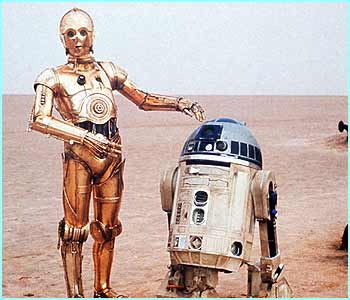A Brief History of Science Fiction Film Music
References, Links, and Works Cited
Created by Jessica Rooney
Last updated 5/1/06


Star Wars: A New Hope (1977)
Use of Leitmotif in Star Wars
Leitmotifs play a crucial role in the music of Star Wars. Developed by operatic composer Richard Wagner (1813-1888), a leitmotif is a “recurring musical theme, associated within a particular piece of music with a particular person, place or idea” (“Leitmotif”) that is “characterized by a single harmonic or rhythmic trait” (Brown 15). As “musical calling cards in film” (Buhler 43), leitmotifs are used by film composers to be recognizable cues for the audience, directing attention from details as simple as the arrival of a character to complex issues such as foreshadow and character growth.
While leitmotifs may compromise a film score as a musical whole by restricting melodic and harmonic development, they give music as a film component a new importance As a director of both conscious and subconscious attention, music is perceived by audiences as an omnipotent herald of truth, independent of the visual action and their own reality of sitting in a theatre. This clarity that leitmotifs allude to leaves audiences “believing that this would all make sense if [they] gave [them]selves over to the music” (Buhler 43).
In Star Wars leitmotifs are heavily used in the score, most noticeably for the characters but also for various other plot factors. These leitmotifs are effective because they give an audience an immediate emotional understanding of the characters and scenes without having to explain the complicated history preceding the actual action of the film. The constant use of leitmotifs throughout the film helps the audience not only follow the plot line but understand it as if they were a character within it as well. This gives the film a mythic quality as the audience relies instinctively on their emotions produced by the music to make clear distinctions between good and evil.